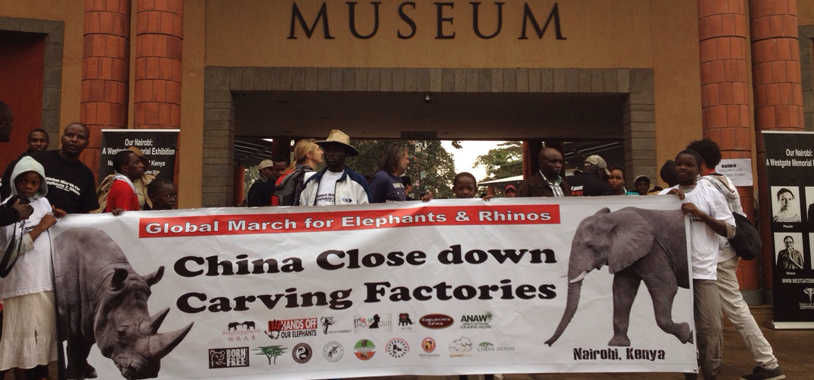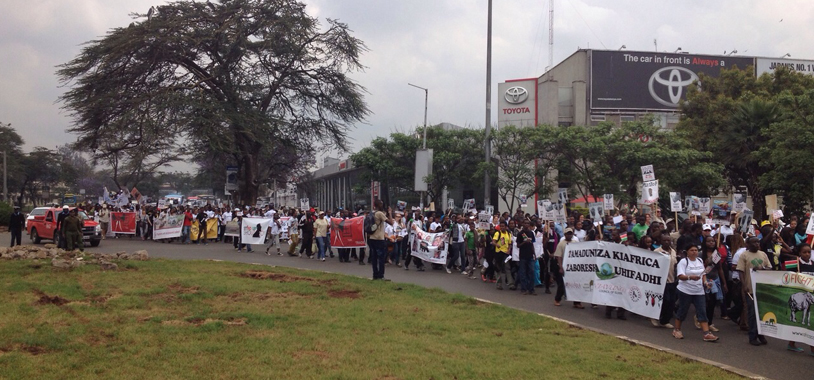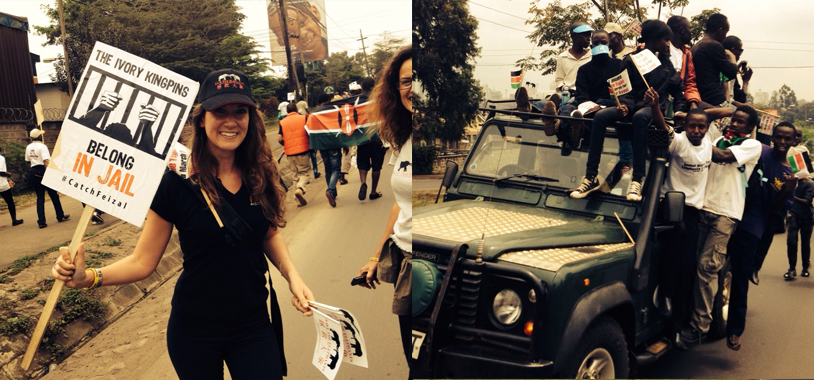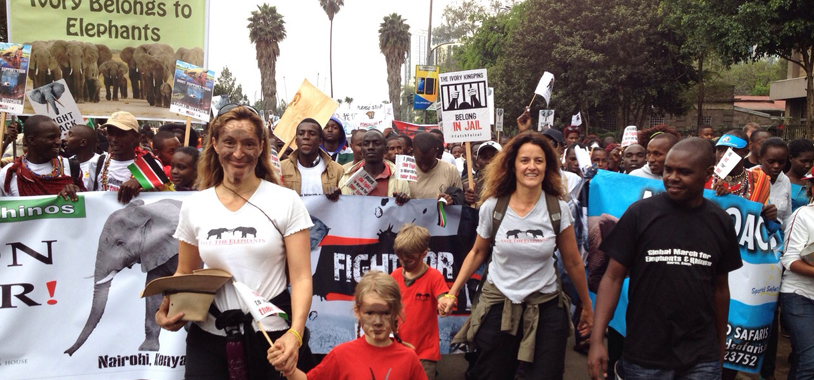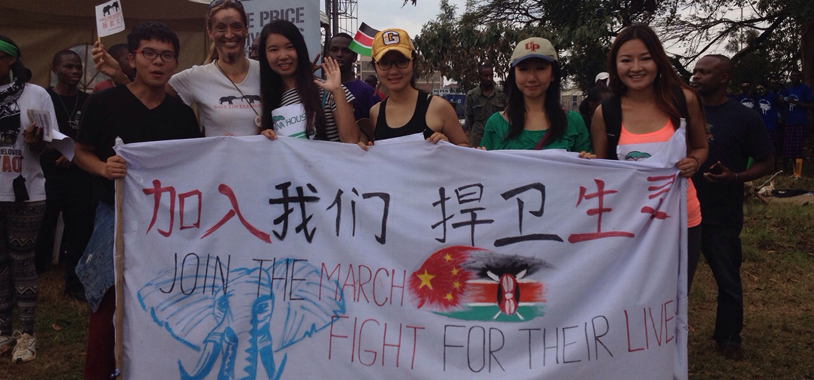The Global March for elephants and rhinos had been hyped for months now, and come October 4th 2014, wildlife enthusiasts in 136 cities and towns across six continents marched in what is said to be the biggest global wildlife protest ever. The messages written clearly on placards and banners reinforced what their voices uttered, “Join the March! Fight for their lives!” All were united in asking the globe to shun ivory and rhino horn as communities and raise awareness on the plight of elephants and rhinos.
Save the Elephants had teams marching in three cities: Nairobi, Vancouver and San Francisco. In Nairobi, participants were at the start point, The Kenya National Museums of Kenya, as early as 6am. The ever-growing crowd snaked its way through major streets in the city and in its wake left behind converts who urged them on. Police escorts cleared the busy weekend traffic for the wildlife army, to the chagrin of some of the drivers, but they soldiered on nonetheless, till they completed the seemingly short 10km walk. Even with the sobriety of the current poaching statistics, what followed was a celebration of Kenya’s rich wildlife treasures in song and dance, as well as keynote speeches from among others Steve Manegene from the Ministry of Water, Natural Resources and Environment, Wildlife Direct’s Paula Kahumbu and US Ambassador John Godec.
In San Francisco, our Chief Operations Officer, Frank Pope, gave a passionate speech lauding the political milestones global coalitions for elephants and rhinos have been able to achieve.
“This is not a new problem…we faced it in the 70s and 80s. That time around, the coalition between people and policy makers saved the day, and elephants enjoyed a 20-year respite from the ivory trade. We can do it again, and we will, with your help,” he said.
While marching peacefully through the Californian city’s Chinatown, marchers stood in silence for two minutes to pay tribute to Mountain Bull, the now world famous icon of Kenya’s massifs whose life STE monitored via a GPS tracking collar, who was poached earlier this year at the foot of Mt. Kenya.
STE’s Jake Wall in Vancouver, Canada reiterated the same spirited message encouraging participants to help spread the word to their governments and demand for ivory trade ban.
Save the Elephants recently released a new research has revealed that an estimated 100,000 elephants were killed for their ivory between 2010 and 2012. An average of 33,630 elephants per annum are calculated to have been lost over those three years, with preliminary data indicating unsustainable levels continued in 2013. The number of elephants remaining in Africa is uncertain, but these losses are driving declines in the world’s wild African elephants on the order of 2-3% a year.
The media coverage of The Global March was outstanding. There is hope. We can end this senseless massacre of our wildlife. Elephants and rhinos united us in this great movement, and we can do more. We have the world’s attention.


